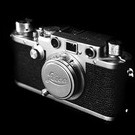Are the Summilux R ROM lenses really fetching what is being asked for them
-
Recently Browsing 0 members
- No registered users viewing this page.
-
Similar Content
-
- 3 replies
- 278 views
-
- 8 replies
- 719 views
-
Character lenses are all the rage in Hollywood - what is your favorite from the M mount? 1 2
By Al Brown,
- 28 replies
- 2,634 views
-
- 14 replies
- 969 views
-
UV Filter for Summilux 35mm 1.4 pre-asph' VII........What size please and where to find one?
By Smudgerer,
- 12 replies
- 355 views
-






Recommended Posts
Join the conversation
You can post now and register later. If you have an account, sign in now to post with your account.
Note: Your post will require moderator approval before it will be visible.